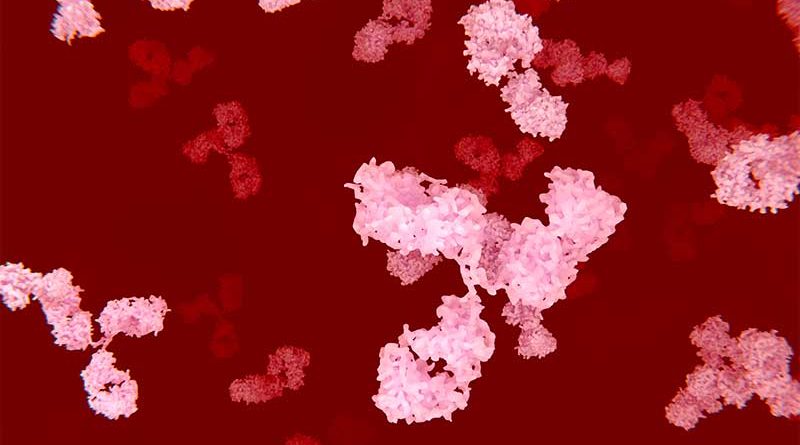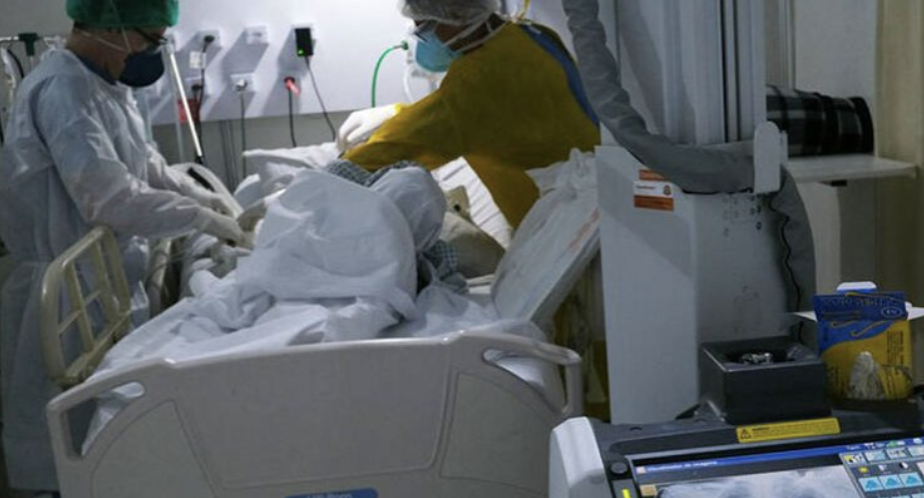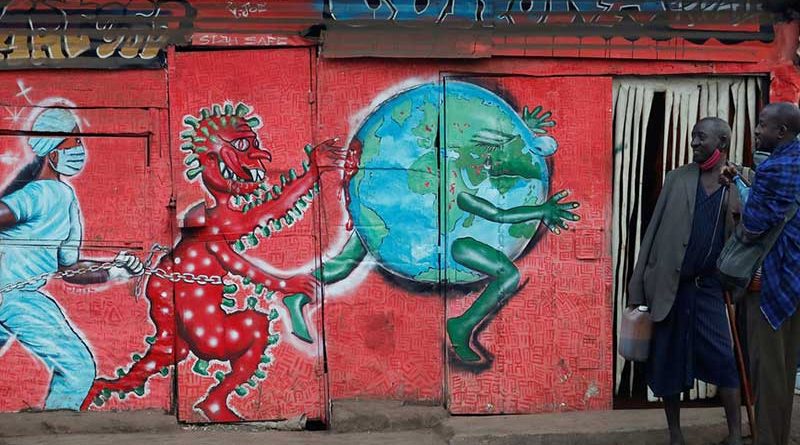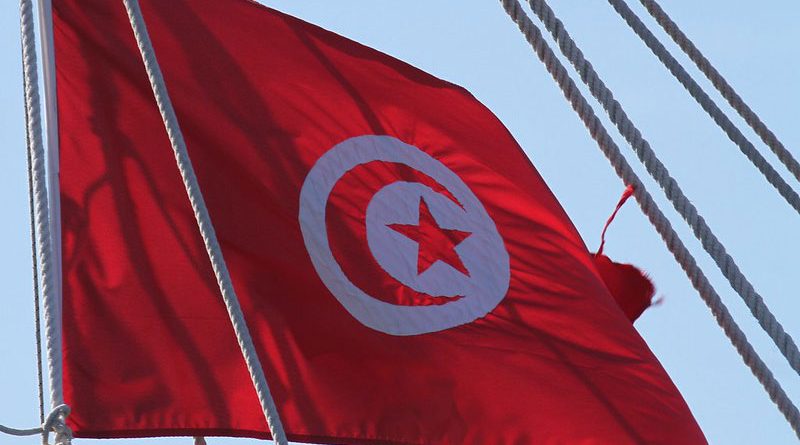ACROSS the world, immunologists who retooled their labs to join the fight against SARS-CoV-2 are furiously trying to explain why some people get so sick while others recover unscathed. The pace is dizzying, but some clear trends have emerged.
One area of focus has been the production of antibodies – powerful proteins capable of disabling and killing invading pathogens like viruses. Of great concern has been the sporadic identification of so-called autoreactive antibodies that, instead of targeting disease-causing microbes, target the tissues of individuals suffering from severe cases of COVID-19.
Early studies implicated these autoantibodies in dangerous blood clots forming in patients admitted to intensive care. More recently, they have been linked to severe disease by inactivating critical components of viral immune defences in a significant fraction of patients with severe disease.
As an immunologist within the Lowance Center for Human Immunology at Emory University, I have been investigating the immune response responsible for producing antibodies in COVID-19. Under the direction of Dr. Ignacio Sanz, our group has previously investigated immune responses contributing to autoantibody production in autoimmune disorders like lupus, and more recently in severe cases in COVID-19. However, while we were able to characterize the response in COVID-19 patients as autoimmune like, we could not confirm the production of autoantibodies hidden within their antiviral responses.
Now we can.
In a newly released study awaiting peer-review, we describe the alarming finding that in the sickest patients with COVID-19, autoantibody production is common – a finding with large potential impact on both acute patient care and infection recovery.
Severe infection is linked with autoantibody production
Autoantibodies come in “flavors” that are usually associated with specific disease types. Patients with lupus, for example, will often have antibodies that target their own DNA – the molecules that make up the human genome.
Patients with the autoimmune disorder rheumatoid arthritis are less likely to have those antibodies, but more likely to show positive tests for rheumatoid factor – antibodies that target other antibodies.
In this study, the Lowance Center group analyzed the medical charts of 52 patients in intensive care who were diagnosed with COVID-19. None of them had a history of autoimmune disorders. However, they were tested during infection for autoantibodies found in a variety of disorders.
The results are stark. More than half of the 52 patients tested positive for autoantibodies. In patients with the highest levels of c-reactive protein (a marker of inflammation) in the blood, more than two-thirds displayed evidence that their immune system was producing antibodies attacking their own tissue.
While these findings raise concerns, there are things that our data don’t reveal. Although patients with severe disease clearly display autoantibody responses, the data don’t tell us to what extent these autoantibodies contribute to the most severe symptoms of COVID-19.
It could be that severe viral illness routinely results in the production of autoantibodies with little consequence; this could just be the first time we’re seeing it. We also don’t know how long the autoantibodies last. Our data suggest that they are relatively stable over a few weeks. But, we need follow-up studies to understand if they are persisting routinely beyond infection recovery.
Importantly, we believe that the autoreactive responses we have identified here are specific to the SARS-CoV-2 infection – there is no reason to believe that similar results would be expected through vaccination against the virus.
Understanding the role of autoantibodies in COVID-19
However, while it is possible that these autoantibodies are benign, or even helpful in a yet-unidentified manner, it’s also possible that they aren’t. Maybe these self-targeted antibody responses do indeed contribute to disease severity, helping explain the delayed onset of severe symptoms in some patients that may correlate with antibody production.
This could be a reason that treatment with dexamethasone, an immunosuppressant often used to quell “flare-ups” of autoimmune disorders, might be effective in treating patients with only the most severe disease. It is also possible that these responses are not short-lived, outlasting the infection and contributing to ongoing symptoms now experienced by a growing number of “long-haulier” COVID-19 patients.
Most concerning, it is possible that these responses could self-perpetuate in some patients, resulting in the emergence of new, permanent autoimmune disorders.
My colleagues and I sincerely hope that this is not the case – rather, that the emergence of autoantibodies in these patients is a red herring, a quirk of viral immune response in some patients that will resolve on its own. But we need to do better than hope – we need to ask the right questions and figure out the answers. Fortunately, this study also gives us the tools to do that.
Autoreactive antibody test may reveal better treatments
The tests that were run on these patients to determine their “autoreactive profile” are not specialized. They are available to most hospital labs across the country. Indeed, the two most common antibodies that we find in these patients, antinuclear antibodies and rheumatoid factor, are detected by common tests used by rheumatologists.
Our study shows that by testing for just these two autoantibodies, and the inflammatory marker c-reactive protein, we may be able to identify patients more likely to be experiencing potentially dangerous immune responses that might benefit from more aggressive immune modulation.
[Get facts about coronavirus and the latest research. Sign up for The Conversation’s newsletter.]
Further, autoreactivity testing might help identify patients who might benefit from the rheumatological follow-up to monitor recovery and help us understand whether some cases of “long-haulier” COVID-19 might be related to persisting autoantibodies. If so, these patients might respond to the same immune-targeted therapies that have been successful in MIS-C where autoantibody production has now been documented.
Finally, by testing patients immediately following COVID-19 recovery, we can establish baselines and begin to track the possible emergence of new cases of autoimmunity following this terrible disease and plan early rheumatological intervention if needed.
We now have the tools. It’s time to start using them. – The Conversation.
Source: The African Mirror
THE United States, Russia, France and many other countries are setting records for coronavirus infections as a tidal wave of cases washes over parts of the Northern Hemisphere, forcing some countries to impose new curbs.
The gloom weighed on global financial markets on Monday as surging infections clouded the economic outlook.
U.S. stocks had their worst day in more than seven weeks over the double whammy of record coronavirus cases and political deadlock in negotiations to provide more economic aid.
Word that a vaccine being developed by the University of Oxford and AstraZeneca Plc produced immune responses in both elderly and young people offered some positive news as autumn turns to winter in northern countries and more people socialise indoors.
But British Health Secretary Matt Hancock cautioned that the vaccine would not be widely available until next year and said, “We’re not there yet”.
Any vaccine faces both scientific and public relations hurdles. Surveys have shown only about half of Americans would get a COVID-19 vaccination due to concerns about safety, effectiveness and the approval process.
In the United States, the number of hospitalized COVID-19 patients is at a two-month high, straining health care systems in some states.
U.S. President Donald Trump, facing a tough re-election battle on Nov. 3, lashed out again at reports that the coronavirus is surging.
He repeated his unfounded claim that COVID-19 cases are rising because there is more testing, an assertion not supported by data and one that has been rejected by health experts.
“Cases up because we TEST, TEST, TEST. A Fake News Media Conspiracy. Many young people who heal very fast. 99.9%. Corrupt Media conspiracy at all time high,” Trump said in a Twitter post.
The number of new COVID-19 cases in the United States last week rose 24% while the number of tests performed rose 5.5%, according to a Reuters analysis.
Source: The African Mirror
ALARM bells have been ringing for months that COVID-19 could push fragile African countries “closer to the abyss” of famine as jobs are lost, local markets close, and poverty deepens.
Aid agencies routinely list the coronavirus as a major factor in driving humanitarian needs, from the Sahel to Somalia, and don’t shy away from describing its impact as the “perfect storm”.
A joint report in July by the World Food Programme (WFP) and the Food and Agriculture Organization (FAO) calculated that COVID-19 could create an additional 121 million hungry people globally by the end of the year – mostly in 15 already crisis-affected African countries.
But as an increasing number of African countries ease their punishing lockdowns, ending restrictions on internal travel, relaxing curfews, and reopening schools, do these dire warnings still hold true?
“Honestly, I’m not convinced [by the numbers],” said one senior Nairobi-based aid official, who asked not to be named so they could speak freely. “Some of the scenarios by us were done back in March/April and were [calculated] on a much longer lockdown period.”
There have been alarming predictions of 6,000 to 12,000 daily deaths from hunger in the worst-affected countries by the end of the year.
But projections in April that a famine of “biblical proportions” is on its way thanks to COVID-19 may be overblown, according to aid workers and anecdotal evidence gathered by TNH reporting.
The aid workers pointed to the deeper, existing problems of conflict and economic crisis, and emphasised the need not to lose focus on those core issues.
“We’re trying to return to normal, but it will be a new normal,” said Jeremy Taylor, advocacy adviser for East Africa for the Norwegian Refugee Council. “Some of the development gains of recent years may have been lost, and we don’t know yet what the multilayered impacts of the pandemic will look like.
Counting the cost
The WFP/FAO figures were based on the numbers of people in pre-existing need as a result of war, climate change, and poverty – combined with early modelling on the likely impact of the pandemic.
That data drew on International Labour Organization estimates and assumed global coronavirus-related job losses would be permanent and that redundancies would accelerate through the year.
The good news – for reasons that at the moment remain unclear – is that Africa has escaped the first coronavirus wave relatively lightly. Despite infection rates in some countries of around 30-40 percent, recorded fatalities have remained remarkably low.
Six months into the pandemic, with lockdowns beginning to ease, The New Humanitarian spoke to six families in three countries – Kenya, Somalia, and Zimbabwe – to hear from them on how they were coping with the economic shock of COVID-19.
They had all been part of TNH’s award-winning Drought Diaries – a sixth-month series running from November 2019 to April 2020 that explored how families juggled their priorities to make ends meet in the face of climate change.
This time we wanted to gauge the extent of any post-lockdown recovery – and although the verdict was mixed, the testimonies and shopping basket data we gathered in August didn’t seem to tally with the apocalyptic projections of devastating hunger made by some aid agencies.
These accounts gathered by TNH are clearly limited. They can’t replace large sample size scientific polling. But because we have tracked the same households since November, their diaries do provide some context for the pandemic’s impact.
“Things are beginning to look up, with the easing of travel restrictions, but the situation remains very unpredictable,” said Ganda Farayi, a forklift driver in the Zimbabwean capital, Harare.
In the Somalian capital of Mogadishu, Yahye Yacqub, a part-time construction worker, was far more pessimistic. He told TNH that jobs had largely dried up as a result of the economic slowdown. Getting just one dollar “is a special day for me”, he said.
Only in Kenya was there cautious optimism about a relatively quick rebound.
“Things are beginning to look up with the easing of travel restrictions, but the situation remains very unpredictable.”
Benjamin Galwaha, a part-time pastoralist and shop owner, said he was “coping better” since the government eased restrictions in July. But for life to return to normal, “we are waiting for the president to open up all the public spaces,” he said.
Kenya, a middle-income country, is not one of the “hotspot” states identified by WFP/FAO at risk of starvation.
In all three of TNH’s drought diary countries, the cost of the family food baskets calculated in dollars had fallen by August in comparison to April – the last time all the households had been interviewed.
In Somalia, the families had saved by switching to the cheapest brands, while in Zimbabwe both were paid in dollars, a partial hedge against an inflation rate of more than 800 per cent and a dizzyingly depreciating local currency.
The interviews point to the bruising experience of COVID-19 – with families losing income, and cutting back on food or school fees expenditure to see them through the difficult months.
“We must be cautious in using hyperbolic language,” noted Taylor of the NRC. “But we do need to recognise the economic hit of the coronavirus and its impact on vulnerable people.”
However, aid workers pointed to longer-term structural problems – beyond COVID-19 – as the main drivers of risk in the African countries identified by WFP and FAO.
In South Sudan, for example, “it’s not COVID-19 that has driven people into extreme poverty, it’s the culture of violence among the political elites and the high level of corruption,” said Edmund Yakani, head of Community Empowerment for Progress, a local NGO.
In northeast Nigeria, “it’s the insecurity [as a result of Boko Haram violence] that is the major driver of needs, and this year won’t be any different,” Hussaini Abdu, Nigeria director at Plan International, told TNH.
There is “no harm in preparing for the worst”, said the aid official quoted earlier, but they then criticised some in the aid world for “jumping on [COVID-19] bandwagons”.
What the evidence suggests instead, is “we need to get our focus back to the existing conflict/disaster settings”.
But while the continent may not have experienced the worst of the pandemic, it has been painful enough. The region may be entering its first recession in 25 years, and although already facing a “debt quagmire”, will need $1.2 trillion through to 2023 to repair the COVID damage.
Government social protection schemes to cushion the poor have proved inadequate, and survival has largely depended on people’s resilience and the durability of the informal economy, research suggests.
An increase in gender-based violence, child marriage, and teenage pregnancies have been the additional social costs of the pandemic.
Locking down the poor
Given the weakness of Africa’s health systems, governments were quick to lock down their citizenry.
By mid-April, at least 42 countries had ordered partial or full stay-at-homes, even though the region’s total COVID-19 cases at the time were under 22,400, with less than 900 recorded deaths.
That may have helped slow the virus, but the economic hit was almost immediate.
In a study in June of low-income neighbourhoods in Nairobi, virtually everyone said their lives had been affected by COVID-19.
More than two-thirds had seen a reduction in earnings – forcing them to borrow or dip into savings – and over 20 percent said they were facing increased hunger, reflecting the results of the TNH drought diaries.
Surveys in Ethiopia had similar findings, with more than half of households – typically those already poor – reporting losses of income and “very high” stress levels.
But the lockdowns have not been uniform in their impact across the continent. More developed regions – typically northern and southern Africa – have tended to impose the most stringent measures, according to the UN’s Economic Commission for Africa.
“Most people are trying to find jobs, and jobs are not forthcoming so people are still struggling.”
In Ethiopia, where government restrictions were relatively light, the initial COVID-19 shock was only “temporary”.
By August, “most households were able to cope relatively well”, drawing on savings or income from the government’s safety net programme, according to the Washington, D.C.-based International Food Policy Research Institute.
In Kenya, “I’ve been shocked by the resilience of people – especially women,” said Carol Sakwa, head of programmes at Shining Hope for Communities, a grassroots NGO.
“But most people are trying to find jobs, and the jobs are not forthcoming, so people are still struggling.”
THE European Union is set to cut Canada, Georgia and Tunisia from a “white list” of countries from which travellers can visit the bloc without COVID-related restrictions such as quarantines or mandatory tests while adding Singapore.
A meeting of ambassadors from the 27 EU nations decided to remove the three countries because of sharp increases in COVID-19 infections there, whereas the situation in Singapore had improved.
The proposal will be formalised by the end of the week as long as none of the 27 EU countries object, said two EU diplomats with knowledge of the meeting.
After the changes, the list will consist of nine countries – Australia, China, Japan, New Zealand, Rwanda, Singapore, South Korea, Thailand and Uruguay.
Despite China being on the list, travel from there will be allowed only if Chinese authorities also allow in EU visitors. The reciprocity requirement is not applied in the case of the other listed countries.
The list also only serves as a recommendation on travel rules. Some countries, such as France, have not placed any restrictions on visitors from countries on the “white list”. Germany has pared the list down, while Italy requires a period of self-isolation and demands travellers take a private vehicle to their destinations. – Thomson Reuters Foundation.
Source: The African Mirror




